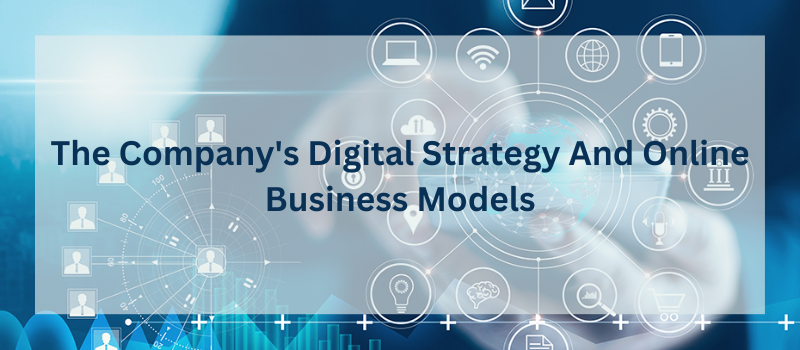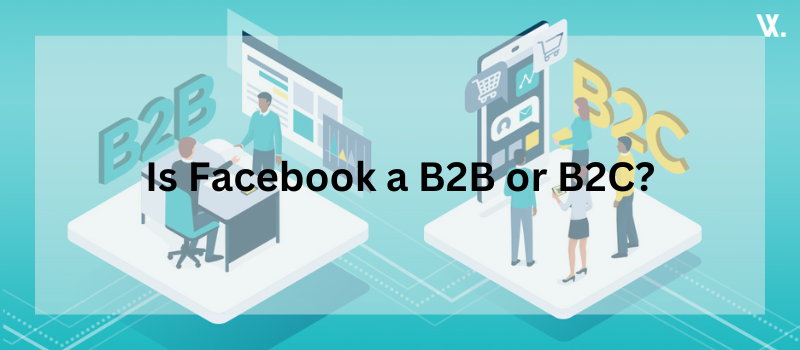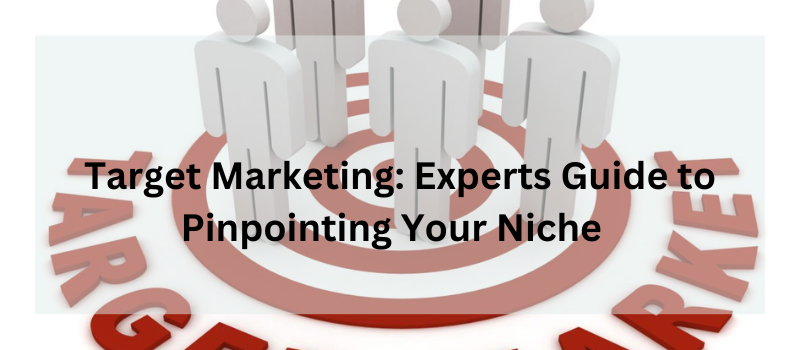Today’s companies need an online plan to reach goals using tech. A digital strategy’s core is the business model – how to profit online. Models like ecommerce or freemium must match company strengths and users. With the right business model guiding initiatives, companies can succeed digitally.
An effective digital strategy lets businesses use the internet to connect with customers and compete.
Contents
- 1 Digital Offerings vs. Digital Business Models
- 2 Characteristics of Digital Business Models
- 3 How to Create a Digital Business Strategy
- 4 Develop Digital Capabilities Across Channels
- 5 Coordinate All Initiatives Into a Cohesive Digital Strategy
- 6 Continuously Collect Data and Analyze Insights
- 7 Different Types of Online Business Models
- 8 Elements of a Strong Digital Strategy
- 9 Successful Digital Strategies
- 10 Conclusion
Digital Offerings vs. Digital Business Models
The main difference between digital business models and digital products is this:
“The digital business model is how a company makes money from the digital goods or services it sells online”
For example, a platform for online learning might offer digital classes. But its business plan is how it makes money, like through subscriptions, ads, etc.
“The business offerings based on making money. Even if a business has great digital products, it needs the right business plan to make money from them”
Some business models, like e-commerce and subscriptions, make money straight from the main services. Other models, like advertising, don’t directly charge for the goods but still make money by showing ads.
| Aspect | Digital Business Models | Digital strategy |
|---|---|---|
| Definition | How a company makes money from digital goods or services sold online. | The actual digital goods or services offered by a company. |
| Focus | Revenue generation and profit through strategies and monetization methods. | The tangible or intangible products or services that customers use or consume. |
| Example | An online learning platform offering digital classes. | The digital classes offered by the online learning platform. |
| Revenue Source | Derived from various sources, such as subscriptions, ads, commissions, or transactions. | Typically generated by selling the digital products directly to customers. |
| Monetization Methods | May include subscriptions, advertising, freemium models, affiliate marketing, and more. | Usually sold through one-time purchases, in-app purchases, or licensing fees. |
| Primary Goal | Maximizing profitability and sustainability of the business. | Delivering value and fulfilling customer needs or wants. |
| Direct Revenue Generation | Not always directly tied to the core product or service. Revenue may come from secondary sources (e.g., ads on a free platform). | Directly tied to the sale or licensing of the digital product itself. |
| Examples of Models | E-commerce, subscription-based models, advertising-based models, affiliate marketing, platform-as-a-service (PaaS), software-as-a-service (SaaS), etc. | Software applications, e-books, online courses, digital art, music downloads, mobile apps, etc. |
Characteristics of Digital Business Models
Digital business models have some key characteristics:
- They leverage the internet and digital technologies to deliver offerings and generate value. This enables global reach and scaling.
- They are often disruptive to traditional business models. For example, streaming music disrupted traditional album sales.
- Many digital models rely on online platforms and networks to connect users and facilitate transactions. The network effects create value.
- Data and analytics are used to gain user insights and personalize experiences based on individual behaviors and preferences.
- Digital models allow far greater scalability than traditional models. There is less physical infrastructure and human effort needed to grow. Geographic expansion is easier too.
In essence, digital business models harness the capabilities of digital channels and data to create, deliver and capture value in innovative new ways.
How to Create a Digital Business Strategy
Evaluate Internal Capabilities and Resources
Before looking outward, companies must look inward to realistically assess their readiness to execute a digital strategy. An honest evaluation of internal strengths, assets and gaps across technology, resources and talent provides the foundation.
Assess the company’s current digital maturity – extent of digital capabilities, channels, data and tools. Review integration of systems, data and processes to identify fragmentation vs unified infrastructure. Catalog current technology stacks and needs for modernization.
Audit human resources in terms of digital skills, training, roles and capacity to meet strategic needs. Assess funding, budgets and investment levels needed. Examine organizational structures and adaptability for cross-functional collaboration.
It enables building digital strategy on a stable, realistic foundation focused on internal alignment and modernization.
Deeply Understand Target Users and Their Needs
Gaining a deep understanding of target users through research and journey mapping allows companies to truly empathize with pain points and behaviors. Ethnographic research, surveys, focus groups and interviews help uncover user needs, frustrations and thought patterns.
Analyzing user data and feedback provides insights into motivations and goals. Mapping the user journey end-to-end exposes experiences across touchpoints. Empathy develops for how users interact, engage and make decisions.
This human-centered design approach puts the user at the core before ideating solutions. User research should be ongoing to continually inform strategy. Users must be segmented and personalized. By deeply understanding the user, companies can design digital experiences that truly resonate.
Choose the Optimal Online Business Model
With internal readiness and user insights in hand, companies can determine the optimal online business model that aligns offerings with user needs. Key models include ecommerce, subscriptions, advertising, freemium or hybrid options.
Consider product-market fit, revenue streams, distribution methods, resources and capabilities needed. The model shapes content strategy, platforms, metrics and capabilities. It determines digital initiatives and focuses teams.
Continuously evaluate if the model optimizes user experience and business goals. Evolve the model as needed based on market changes, user feedback and performance data. Choosing the right business model provides a strategic foundation for digital experiences.
Define Strategic Objectives, KPIs and Metrics
Clear objectives, metrics and goals must be defined to track performance and guide initiatives. Set specific, measurable KPIs and targets based on business priorities. Metrics should connect to user goals and business model.
Track macro conversion metrics like revenue and profitability. But also set micro goals across funnels – traffic, acquisition, conversions, retention, referral. Measure engagement, satisfaction, loyalty. Monitor operational metrics like site performance.
Ongoing analysis of metrics shows what resonates. Leverage analytics and intelligence. Goals should be realistic yet challenging. Continually optimize objectives and KPIs based on insights. Aligning goals, metrics and analysis is crucial for digital strategy success.
Develop Digital Capabilities Across Channels

Create Unified Brand Experiences
Core digital capabilities need development across channels like website, mobile, social and ads to create unified brand experiences. Ensure visual identity, tone, messaging and interactions are consistent. Optimize for key platforms without sacrificing continuity.
Use centralized content management and customer data. Build multi-channel journeys and workflows. Enable seamless, omnichannel experiences through integration. Testing and iteration uncovers optimal channel mix. Measure cross-channel performance.
Customer insights should inform personalization across channels. Developing integrated digital experiences drives growth.
Coordinate All Initiatives Into a Cohesive Digital Strategy
Guide Strategy With Business Model and Audience Insights
Digital strategy and online business models efforts should coordinate into a cohesive strategy centered around the business model and audience. Initiatives should target user goals identified through research. The strategy guides resource allocation, platforms, capabilities, content and campaigns.
Continual user feedback and performance data inform refinements. Digital maturity evolves across dimensions like technology, organization, culture. Governance and processes nurture collaboration and innovation.
Leadership communicates vision and empowers change. Organization adapts to enable agility, creativity and execution. A holistic strategy guided by business model and user needs drives digital success.
Continuously Collect Data and Analyze Insights
Refine Strategies Based on What Resonates and Evolves
Data collection and analysis will provide continuous insights to refine strategies based on what resonates and evolves. A/B test content, offers and flows. Analyze campaigns, adoption and engagement metrics.
Track ROI and conversion paths. Monitor operational KPIs. Competitive benchmarking reveals gaps. Listen to customer feedback and market trends. Learn from successes and mistakes. Insights inform when to optimize vs transform strategies.
Data helps segment users to customize experiences. An insights-driven, iterative approach enables strategies to improve continuously. Digital strategies must evolve to drive ongoing success.
Different Types of Online Business Models

Ecommerce
Ecommerce involves selling products directly to customers online through a company’s website or mobile app. Pure ecommerce companies like Amazon have no physical stores and inventory and conduct all sales digitally.
Other companies use ecommerce to complement physical store sales.
Ecommerce platforms and capabilities allow companies to sell products directly to customers online.
Examples include:
- Building an ecommerce website with product listings, descriptions, images and pricing. This enables online browsing and transactions.
- Offering a mobile ecommerce app to allow purchasing on smartphones. Apps provide convenience and on-the-go access.
- Using ecommerce software and tools like Shopify to power the website and manage inventory, orders, shipping and fulfillment.
- Integrating payment processing like Stripe to handle online payments seamlessly.
Subscription
The subscription model charges customers a recurring fee, often monthly or yearly, to continuously access a product or service. Companies like Netflix, Dollar Shave Club, Spotify use subscriptions. This provides a reliable revenue stream and loyal customer base.
- Offering monthly or annual subscription plans with tiered pricing based on features and access levels. Provides options tailored to diverse customer needs.
- Enabling easy signups and allowing subscribers to easily cancel or change plans to reduce friction. Minimizes barriers to subscribing.
- Providing exclusive content, tools, or benefits only available to paid subscribers to incentivize subscriptions.
- Using lifecycle email campaigns and in-app messaging to showcase new content and features to engage subscribers.
- Analyzing subscriber cohorts and behavior over time to optimize pricing, targeting, promotions and experiences. Data-driven insights retain subscribers.
Freemium
Freemium offers a basic product version for free while charging a premium for advanced features or add-ons. LinkedIn, Dropbox, and free games use this model to attract users and convert some to paying customers. The free version acts as a powerful marketing tool.
- Offering a compelling free product with basic features to attract users at scale and build market share. This acts as a risk-free trial.
- Clearly communicating the value proposition of premium offerings to motivate free users to upgrade.
- Providing a seamless, frictionless upgrade path from free to premium versions to facilitate conversion.
- Using in-app messaging, prompts, and special offers to nudge engaged free users to convert to paying customers.
- Segmenting users based on behavior to target upgrades and tailor premium offerings to their needs.
Advertising
Companies offering free content, services, or platforms generate revenue by running ads. Google, Facebook, and many apps and websites make money through advertisements while users enjoy free access. This model hinges on having interesting content and large user traffic to expose ads.
- Offering free, engaging content that attracts a high volume of users and builds significant website or app traffic. This provides a large audience to expose ads to.
- Implementing ads through networks like Google AdSense or directly selling to advertisers interested in targeted users.
- Optimizing ad formats, positioning and relevance to balance impact without distracting from core content.
- Analyzing user demographics, interests, and behavior to enable personalized, targeted ad delivery.
- Tracking ad performance with metrics like clicks, conversions, and revenue to optimize delivery and pricing.
Marketplace
Online marketplaces facilitate transactions between buyers and sellers. eBay connects vendors with customers for auctioning or buying fixed-price items. Uber matches riders with drivers. By bringing together demand and supply, platforms create value for different user groups.
- Building a user-friendly platform that makes it easy for suppliers to list inventory and products to scale offerings.
- Implementing robust search, filtering, and recommendation engines to connect buyers with relevant items.
- Offering communication tools for exchanges between buyers and sellers and a payment system to facilitate transactions.
- Implementing reputation systems through ratings to build trust between strangers and ensure quality interactions.
- Segmenting users based on activity and needs to customize experiences for buyers versus sellers.
Elements of a Strong Digital Strategy
An effective digital strategy consists of several key elements working together to drive business growth.
- Website/App Development
Having an intuitive, user-friendly website and mobile app that aligns with a company’s brand is foundational. Optimizing for mobile usage and speed is vital, given expanding mobile internet consumption.
- Search Engine Optimization
Quality content optimized for relevant keywords will attract organic search traffic from Google and other search engines. SEO is about earning a top ranking so the right users can find your content.
- Social Media Marketing
Leveraging platforms like Facebook, Instagram, Twitter, and LinkedIn to actively engage current and potential customers. Social media fosters brand building through useful, shareable content and conversations.
- Email Marketing
Collecting email addresses to build a subscriber list allows sending targeted campaigns. Email combines high reach with good conversion rates when executed well.
- Paid Advertising
Paid channels like Google Ads, Facebook ads, YouTube ads, and display advertising enable reaching more users. Companies pay only when users engage with the ads. Helps expand audience and increase conversions.
- Data and Analytics
Using data and metrics to track digital activities and pinpoint what’s working. Web analytics and conversion tracking provide insights to continuously refine strategies and boost ROI.
- Omnichannel Experience
Creating a seamless, consistent experience for customers across devices (mobile, desktop), platforms (app, web), and touchpoints (social, email, in-store). Eliminating friction across channels is key.
Successful Digital Strategies
Let’s look at some real companies executing successful digital strategies through smart online business models:
- Netflix
Netflix pioneered video streaming with its on-demand subscription service model. It creates and licenses binge-worthy original programming, uses data analytics to suggest personalized content, and provides an ad-free experience on all devices. This has driven its meteoric growth.
- Amazon
Amazon masterfully capitalized on the ecommerce revolution. Its massive online store sells every conceivable product. A premium Prime subscription model offers fast delivery and media streaming. Amazon Web Services has become a highly profitable cloud computing arm.
- Salesforce
Salesforce led the way for SaaS or cloud-based software. Its CRM applications help companies manage customer relationships. Salesforce thrives on subscription revenues and a robust partner ecosystem. Integrations with other software expand its capabilities.
Conclusion
In today’s digital landscape, having a sound digital strategy and online business models strategy to leverage technology is imperative for business success. At its core is selecting the optimal online business model aligned with company strengths and user needs – whether ecommerce, subscription, advertising or freemium.
Click below to sign up for our free digital strategy and online business models assessment to start leveraging online models tailored for your business goals.
Let us guide you on the path to digital success: Click here
Read More:



